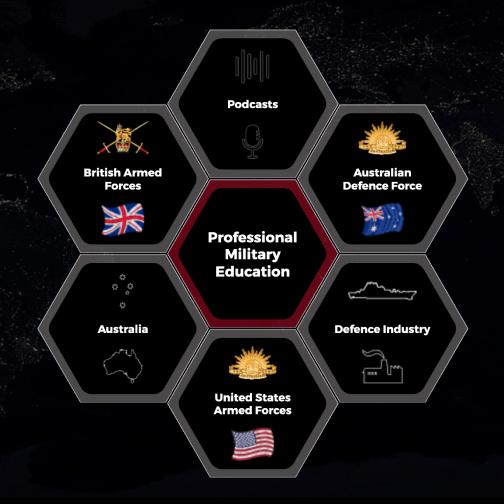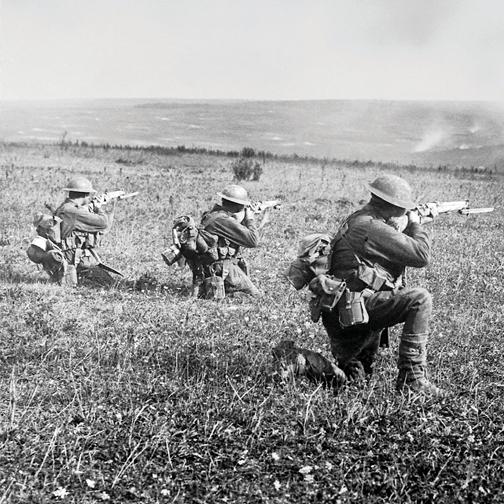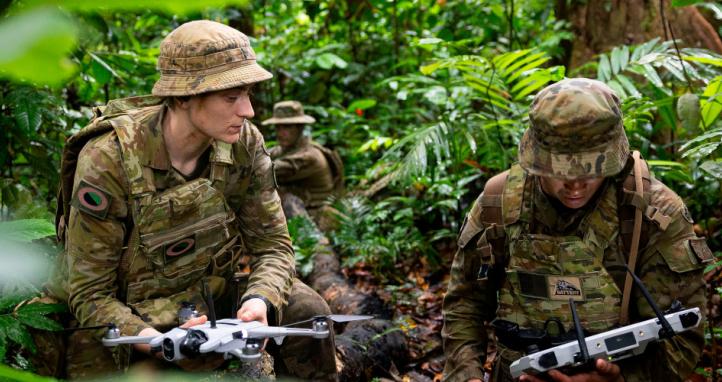Australians have always found strength in innovation born of necessity. Over generations of war, those who have excelled in the ability to improvise, innovate, and adapt at the grassroots level have shaped the battlefield. In 2025, this remains the case. In a battlespace that blends age-old trench warfare with AI driven robotic platforms, there is a very real need to innovate in order to survive.
As warfare evolves, the Australian Army requires its soldiers to lead the development of both strategy and technology, ensuring that the legacy of ‘Aussie ingenuity’ continues to provide a strategic advantage in any contested environment. Some of the best ideas and capabilities are developed in the cages or whilst on piquet. Although I have no affiliation with MakerSpace, its role as a sponsored program stands as a vital enabler in the pursuit to turn technological ideas into practical capabilities. By providing access to tools, training, and a culture of hands-on experimentation, it empowers soldiers to continue to innovate.
Innovation in developing quick decision tactics within unit training programs will also foster survivability. Moving away from large-scale exercises, units must look to allocate sufficient time for their soldiers and JNCOs to become comfortable with innovation on the run and be resilient to change.
Transforming Battlefields throughout history.
The legacy of Australian battlefield ingenuity is renowned throughout recent history. Repeatedly, Australian soldiers have created or improvised equipment to achieve enhanced survivability or lethality. From the makeshift periscopic rifles at Gallipoli to the production and customisation of Electronic Counter Measures (ECM) for use in Iraq and Afghanistan, the development of solutions to problems is what Australians do best.
The pace of innovation is relentless.
Around the world, soldiers are turning necessity into opportunity, innovating at speed to gain the advantage of the day.
Ukraine’s ‘Operation Spiders Web’ demonstrated the devastating impact that coordinated drone swarms can have, disabling over 40 Russian aircraft and causing damage to airfields in synchronised strikes. In the Middle East, Iran has used swarming drones in conjunction with missile attacks in an attempt to saturate Israel’s Iron Dome defence. In China, the Jiutian SS-UAV “Mothership” program aims to redefine aerial warfare by utilising long-range deployable micro Uncrewed Aerial Vehicles (UAVs) guided by AI to conduct ISR, electronic warfare, and autonomous swarming attacks.
The ‘Hurry up and wait’ of Macro Development
Following in the footsteps of the U.S. Air Forces XQ-58A Valkyrie and the DARPA Gremlins Program, Australia has begun its shift toward transforming to operate in a future combat environment. With macro developments in the air to support the F-35 and E-7A Wedgetail, the MQ-28A Ghost Bat program – aka the ‘Loyal Wingman’ – marks a significant step to the Australian Defence Force (ADF) employing collaborative autonomous systems utilising UAVs.
For ground units, successful experimentation has been conducted over several years using technology that includes the ‘Hunter Wolf’ uncrewed ground vehicles (able to extend their operations ahead of a battlegroup without resupply) and the Defendtex Drone 40, which is capable of both ISR and attack taskings. The modified use of off-the-shelf UAVs such as the Phantom 4, has also been ‘tinkered’ with for many years, tapping into that ‘Digger ingenuity’ previously discussed.
With recent demonstrations of UAV capability on Exercise Talisman Sabre 2025 (which included applications in ISR, frontline casualty trauma care, and munitions delivery), Australia’s approach must continue to work towards leading the global standard to curve emerging threats at a base level.
Innovation on the run.
What were once distant possibilities for battlefield communication, munitions, software, hardware, coordination, and control are now the realities that shape conflicts around the world. Each area of operation demands a highly adaptive, capable force that does not rely simply on achieving battlefield dominance through firepower alone. It requires a force capable of ‘innovation on the run’ and the ability to adapt its tactics to emerging technology whilst on the front line, at minimal cost, with what is available. A soldier-led innovation approach will ensure real time threats have real-time solutions, without the need to rely on lengthy product development. This innovation includes ground tactics, techniques, and procedures.
Creating the challange for soldier-led innovation.
The challenge of innovation does not lie in coming up with the idea. The challenge lies in creating a toolbox that allows a soldier to drive their creation from conception to construction. In previous years, MakerSpace has provided a collaborative workshop environment on bases around Australia where soldiers could take a learn-by-making approach, experimenting with tools, technology, and design in an innovative educational approach. Building on that foundation, the ‘Rise of the Machines’ initiative (currently ongoing) takes things further, offering a hands-on competition that immerses soldiers in the design, programming, and deployment of ground-based robotics and autonomous platforms. The challenge is clear: Design – Build – Fight!
Expect the unexpected – Innovate every skill set
Over the past decade, enormous attention has been focused on large-scale exercises that practice company, battalion, and brigade level manoeuvres. This macro training approach often results in lost opportunities for soldiers to exercise an innovative approach in adapting their individual, brick and section level skillsets to unexpected events.
“Unless you're an O4 or above, you won’t even get a mention in the AAR.”
While large scale scripted manoeuvres have proven to be a successful base for higher command to integrate their teams through international engagement, they have not empowered our soldiers and JNCOs to fully practice how to adapt, improvise, and learn from what works and what doesn’t work in real time. Often ticking the boxes for ATL progression, the bedrock of basic manoeuvre is glossed over in order to achieve the macro end state. It is no longer good enough to merely adhere to doctrine, we must constantly innovate tactics, techniques, and procedures (TTPs) that do not always follow a textbook path.
“A serious problem in planning against American doctrine is that the Americans do not read their manuals, nor do they feel any obligation to follow their doctrine.” – Unknown Soviet Officer
A decisive factor in all of warfare is that ‘the enemy always get a say’ in how a team operates on the battlefield, Doctrine is predictable. Continued innovation breeds flexibility and enables the ability to adapt with strength and confidence. Becoming comfortable with being uncomfortable builds the trusted cohesion needed to support the innovation at the small team level. Moving forward, innovation in tactics must be encouraged and fostered within all units and their training programs throughout the whole ADF.
The Path Forward
Great challenges face the current and future generation of warfighters. Creative innovation must be employed with urgency, and be embraced without resistance to constant change. Creativity and determination in order to deliver the ability to evolve the battlespace and maintain dominance consistently will ensure that Australia sets the standard for excellence in to the future. By fostering the next generation of warfare entrepreneurs, the ADF will ensure the legacy of Australian battlefield ingenuity continues.










Another aspect to this is loss of traditional skills like hunting fishing and bush cooking. Many young players are missing these base skills and could go with some alternative instruction on them.
They are fluent in tec but not in hand or life skills.